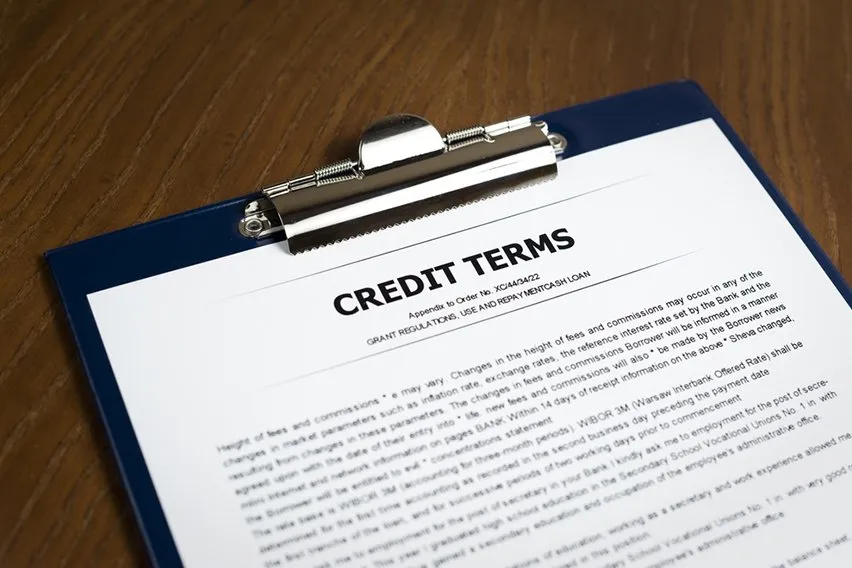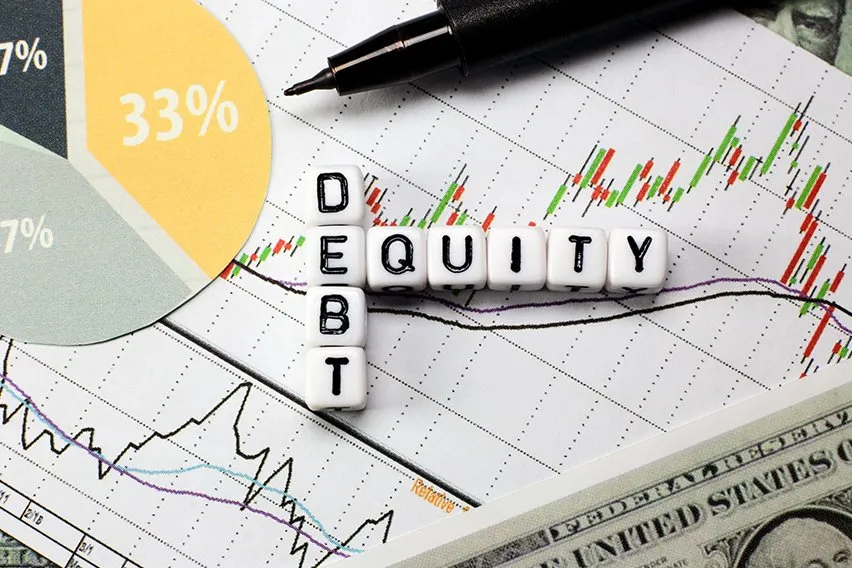What Are Credit Terms: Definition, Types & Examples

Applying for different types of loans or even reading your credit card statement can include different types of terms. It can be confusing trying to understand all the different credit terms and what they mean. Having a clearer understanding of these credit terms can make managing your credit a little easier.
Plus, as a small business owner, it’s equally important to know what business credit terms are and how they can impact your operations. Similar to personal credit, your business credit is going to determine if you can be trusted with managing money, such as with a business loan.
The good news? You don’t have to be a financial guru or expert to understand what goes into the different credit terms. But, knowing these key terms and their definitions can help you receive successful funding and earn various lenders’ trust.
Here’s everything that you need to know about credit terms, including some common types and a few examples.
Here’s What We’ll Cover:
What Are Credit Terms?
Credit terms get used to define different things outlined in a credit agreement or that have to do with business credit.
Common Credit Terms
Interest Rate
When you borrow money, like with a loan, you incur a fee that’s known as an interest rate. The interest rate is a percentage of the total balance that you owe in addition to the amount that you borrowed. If you have good credit, you might pay a lower interest rate. With a poor credit score, you will likely have a higher interest rate.

Annual Percentage Rate (APR)
This takes all your interest rates and fees into account so you know the total amount you need to pay on average over a year. You might have separate interest rates for various types of transactions. For example, you could have one interest rate for purchases and a separate interest rate for cash advances.
There could also be an annual fee to maintain your credit and the annual percentage rate factors that amount into your interest rate.
Minimum Payment
This is the minimum amount you’re allowed to pay to remain in good standing with your financial institution. There could be a flat rate minimum payment or you might have to pay a certain percentage of the total amount owed. Any amount that you owe after making the minimum payment will typically accrue additional interest. This makes the minimum payment higher as time goes on.
Principal Balance
The principal balance is the total amount that you owe at any given time. This amount can vary if you make different purchases and payments. To pay off credit card debt or a loan in full, your principal balance needs to reach zero dollars owed.
Billing Cycle
When you take out credit or a loan, the billing cycle is the number of days that pass between statements. The length will vary depending on your credit or loan provider, but it’s usually around 30 days. After the billing cycle ends, your provider will issue a statement based on the activity that you had throughout the cycle.
Credit Utilization
Whoever your lender is will report your credit usage to various credit bureaus. They calculate your credit utilization which is going to be the percentage of total credit that you’re using. For example, if you have a credit line of $1,000 and you use $250, your credit utilization is 25%. It’s important to keep in mind that you can exceed 100% utilization if you max out your credit and then incur extra interest and fees.
Payment Terms
This is the agreement that you make to pay back any of the money that you borrow. It will usually include a payment due date, a minimum payment amount, an interest rate and applicable fees. The payment terms will outline what happens if you miss payments or have late payments. This can result in limiting your access to the credit until you get back in good standing.
Refinancing
If you have a credit agreement, you can go through refinancing if your circumstances change. When you refinance credit you pay off one line of credit with another. This can help you save money and have more favourable payment terms.
Credit Report
A credit report is going to give you an overview of your credit history and where you currently stand. It will outline the types of credit you currently have or any credit you have had in the past. Lenders can see how high or how low your balances are and if you make payments on time.
Credit Score
This gets included in your credit report and it helps to determine your creditworthiness. Lenders will check your credit score to see if you will be a good candidate to lend money to.
Having a higher credit score indicates that you’re trustworthy and you make your payments on time. A lower credit score indicates that you might bring risk to lenders.
Minimum Amount Due
If you use some of your credit, you’re going to have to pay off a minimum amount that you owe each month. The minimum amount due is a payment that gets made monthly to keep your account current. It also helps you avoid paying any penalty or late fees.
The total minimum amount due could either be a fixed instalment or even a percentage of the outstanding balance.
Payoff Amount
When you want to close a debt, you have to pay off a total dollar amount for it to happen. The payoff amount might be more than the original principal balance since it will have unpaid interest, fees and late charges.
If you want to receive a payoff amount, you might have to request a quote from your credit provider or your lender. Depending on the lender or credit provider, they might also include a prepayment fee that gets included in the payoff amount.
Down Payment
This is a one-time cash payment that you submit at the start of a loan application process. The total amount of a down payment is typically a percentage of the full purchase price. For example, making a down payment on a mortgage for new office space might be 20% of the total value.
Plus, a down payment can lower the monthly payment you need to make while also reducing the total interest rate. It also helps improve your odds of having a loan improved. Some banks and lending institutions might have different requirements when it comes to down payments.

Cosigner
You might not have the greatest credit rating. When this happens, a cosigner can help strengthen the odds of a loan getting approved. This is especially the case if the cosigner has a high income or a high credit score compared to you as the primary borrower.
If the application gets approved, the cosigner becomes equally responsible for repaying the debt. They also assume legal liability to pay the debt in full if you end up defaulting.
Collateral
Some banks or lenders require certain collateral for you to get your application approved. Collateral is a type of asset that you put against the repayment of the loan. But, for a loan to become secure, the total value of your collateral needs to be equal to or exceed the original loan amount.
If for some reason you can’t pay the loan back in full or if you default, the lender can take possession of your collateral. They would use it to help regain any losses they incurred.
Here are some various types of collateral:
- Real estate, like your home or office space
- Vehicles that you own
- Certain types of equipment or machinery
- Home equity
Key Takeaways
There can be a lot to know and understand when it comes to the different types of credit terms. Yet, to manage your credit as effectively as possible it can be useful to understand them. You won’t get caught off guard with unexpected fees or requirements.
Plus, you can stay on top of everything from your income statement, financial resources and credit limit.
It’s important to take the time and speak with your bank or lending institution to get a better understanding of what’s outlined in their agreement. Be sure to ask questions if you’re unsure, and you can use this article as a good reference for informational purposes.
Did you enjoy reading this guide? Head over to our resource hub for more great content!
RELATED ARTICLES

 What Is a Sales Journal Entry: Definition & Importance
What Is a Sales Journal Entry: Definition & Importance Debt-to-Capital Ratio: Definition, Formula, Example & Calculation
Debt-to-Capital Ratio: Definition, Formula, Example & Calculation What is Reserve Accounting?
What is Reserve Accounting? What Is the Accounting Cycle? Definition, Steps, and Example Guide
What Is the Accounting Cycle? Definition, Steps, and Example Guide What Is Quick Ratio & How to Calculate It? Formula & Example
What Is Quick Ratio & How to Calculate It? Formula & Example 4 Types of Depreciation Methods & Its Formula
4 Types of Depreciation Methods & Its Formula